 Fenix Tours
Fenix Tours
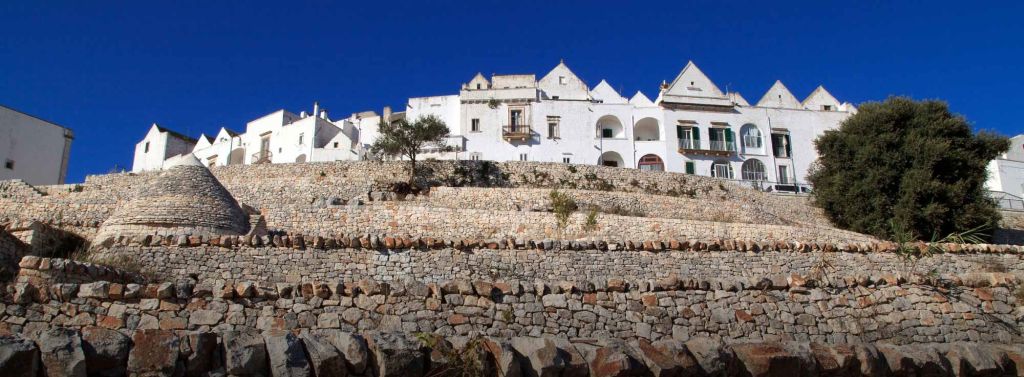


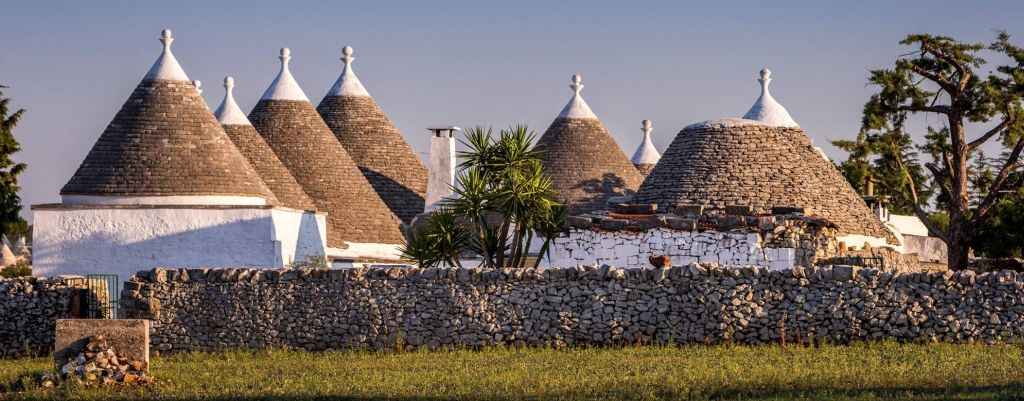
Trulli surrounded by vineyards and olive groves as far as the eye can see, this is the most authentic face of the Valle d’Itria. The landscape fills the gaze with timeless magic, in the heart of charming villages such as Alberobello, Locorotondo, Martina Franca, Ostuni and Cisternino.
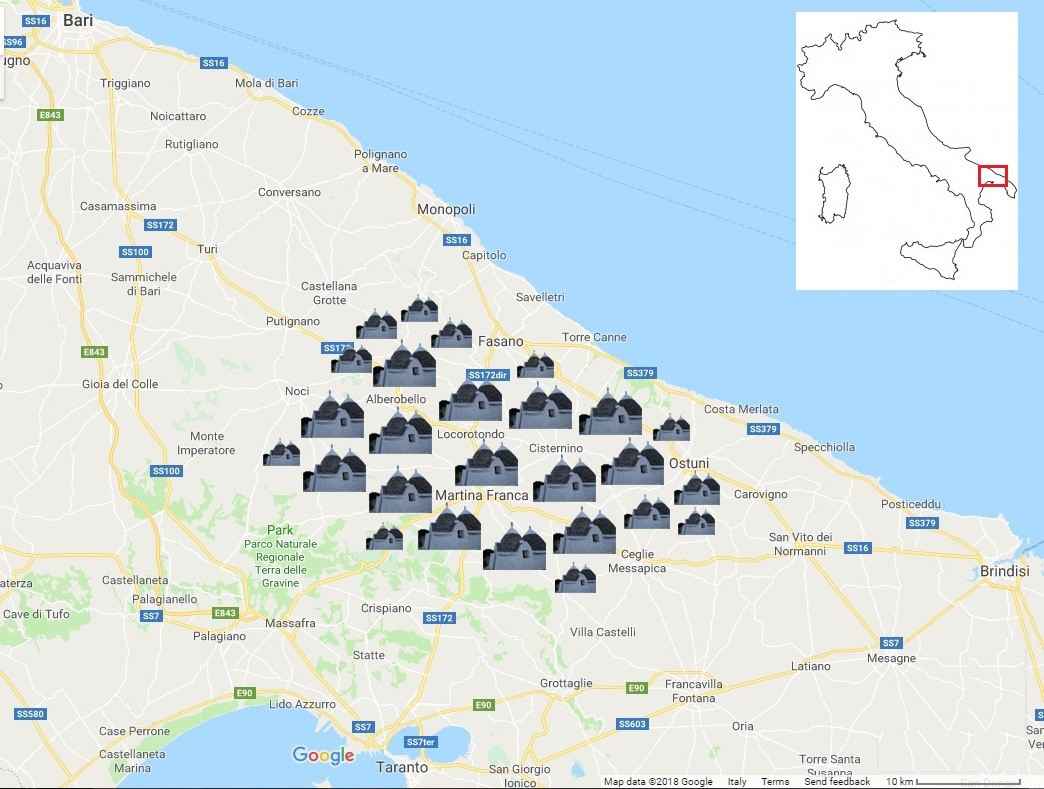
The Valle d'Itria lies in the southern part of the Murge plateau and in the strict sense is the karstic depression that extends between the towns of Locorotondo, Cisternino and Martina Franca. The main peculiarity of the valley are the trulli, typical and exclusive cone-shaped stone dwellings, the farmhouses and the rural landscape in general characterized by the high use of local stone used to build dry stone walls and bright red soil, typical of southern Puglia. Also known as "Valle dei Trulli", it extends between the provinces of Bari, Taranto and Brindisi and, in addition to the municipalities of Locorotondo, Martina Franca and Cisternino, small portions of the Valle d'Itria also fall within the municipalities of Alberobello, Ostuni, Fasano and Ceglie Messapica.
The hypothesis that the name of the valley derived from the homonymous little stream that long ago used to pass through these places was abandoned then there are only two options left. The first links the origin of the toponym to the distant discovery of an ancient icon of the Virgin in a large water tank, immediately named “Madonna d'Idria”, modified in Itria; hypothesis supported by some cases of local onomastics (Maria d'dria). The second hypothesis, attested by recent discoveries, wants the name to derive from a rural church at the south-east of Martina Franca, dedicated to the “Madonna d'Hodigitria” (guide and protector of wayfarers) cult of eastern import. In fact it was already well known that the Virgin Hodigitria, patroness of Constantinople, venerated in the East for many centuries, arrived in Italy through the fugitive Baldwin II, the last Latin emperor of Byzantium, who in 1261 brought with him the very ancient painting, attributed even to the brush of St. Luke the Evangelist, painting that was recently (1989) found hidden under the Madonna di Montevergine, in the homonymous Sanctuary in the province of Avellino. The very important discovery supports the hypothesis of a great diffusion of the cult for the “Madonna d'Hodigitria” in the South, which in our case was changed to Itria.
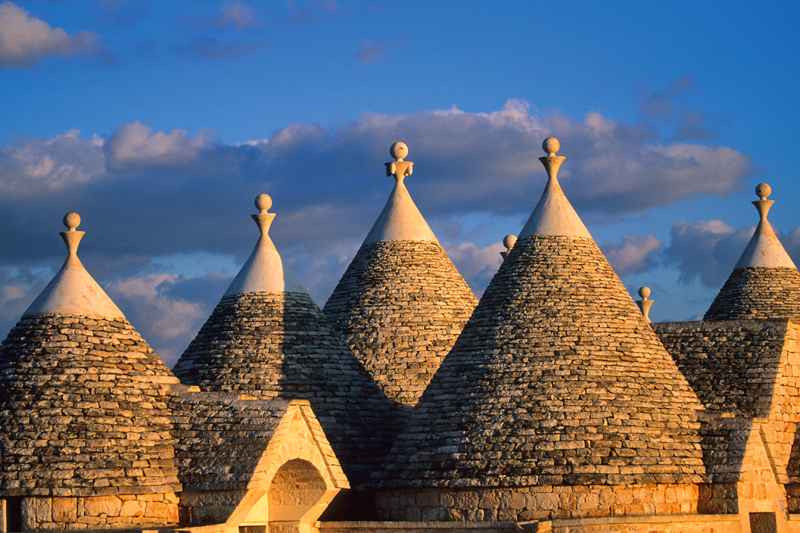
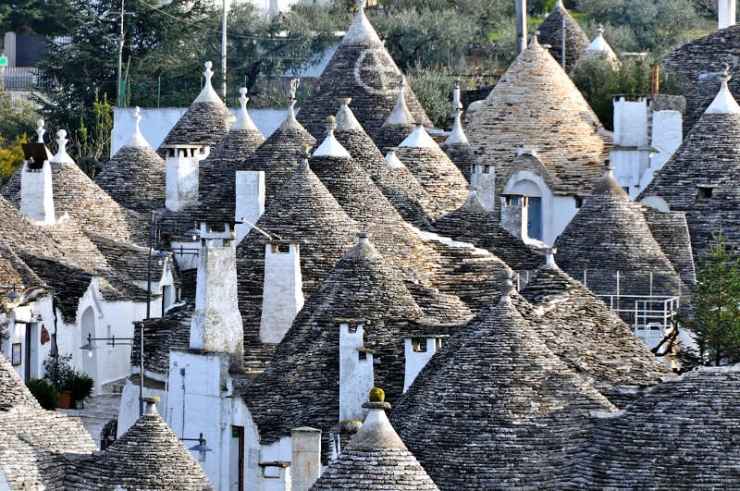
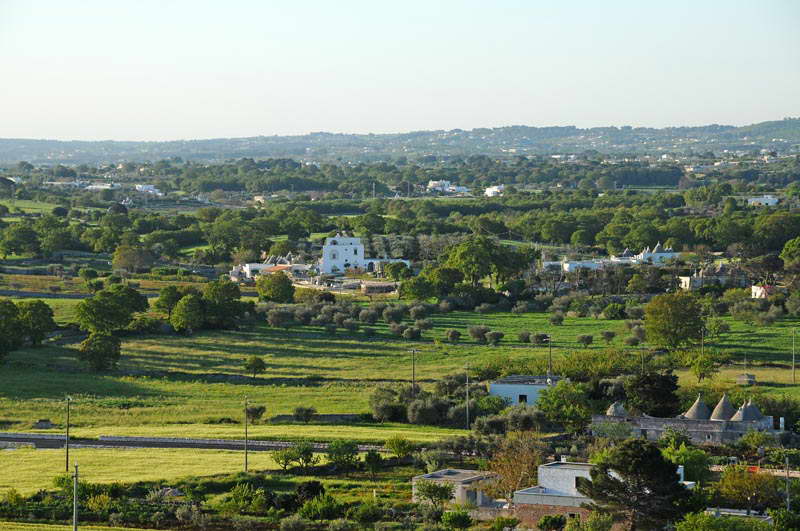
The trullo is a type of conical construction in traditional dry stone from central-southern Puglia. The trulli were generally built as temporary shelters in the countryside or permanent dwellings for farmers. A large part of the Alberobello agglomeration in the metropolitan city of Bari, and until the 1950s also the municipality of Villa Castelli in the province of Brindisi, were made up of trulli. The trullo is a refinement of the prehistoric model of "thòlos", present in various areas of Italy and the Mediterranean; the trulli are distinguished by the continuity of use they have been subjected to. Despite the presence in the trulli areas of archaeological finds dating back to prehistoric times, or foundations of stone huts dating back to the Bronze Age, there are no particularly ancient trulli: the oldest ones still existing are datable to the end of the XVII century close to the Apulian plateau of the Murgia.
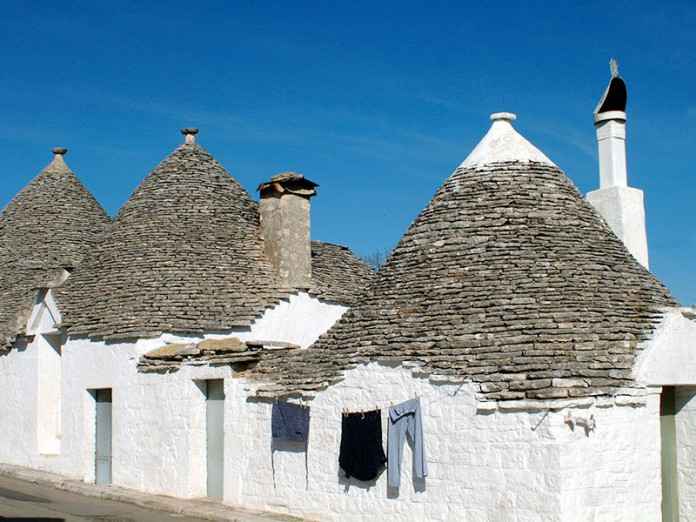
The origins of trullo constructions in Puglia and in particular the Trulli of Alberobello - declared World Heritage Site by UNESCO since 6 December 1996 - are the subject of research and debate. The primitive Apulian trulli were built by peasants and shepherds with the stones gathered locally, in the farms themselves. Constituted of a single compartment, they were used as temporary shelter or as a deposit for agricultural tools. Over time their shape underwent a slow evolution, arriving at homes of several rooms, consisting of a main room, plus other smaller ones such as alcoves.The diffusion of the trulli was enhanced by the phenomenon of the feudal land splitting, which led to scattered settlements in the countryside and the agricultural exploitation of previously uncultivated land, with the need to build shelters for each farm. The once wooded area where Alberobello was founded - a unique agglomeration in the world with its 1500 trulli - until 1481 was a fief of the Caracciolo dukes of Martina Franca, then passed into the hands of the Acquaviva counts of Conversano. The Acquaviva settled numerous peasants, granting them some benefits (although reserving the exclusive right of ownership), such as the possibility of building shelters with local stone, strictly dry-stone walls, without the use of hydraulic binders such as mortar, so to be able to quickly demolish them in case of inspection of the Spanish viceroy of the Kingdom of Naples, thus eluding the Pragmatica de Baronibus, a law that imposed authorizations and taxes for the new settlements, in force until 1700. The Alberobello forest was mainly urbanized by one of these counts, Giangirolamo II Acquaviva d'Aragona known as “Guercio di Puglia” (1600-1665), considered by his subjects to be a vindictive and bloody tyrant, arrested and imprisoned in 1648 in Madrid by order of Philip IV. The village he founded remained an abusive settlement, where the lords could claim every right to the detriment of the population, until 1797, when it had 3200 inhabitants and was freed from the feudal yoke by the king of Naples Ferdinando IV. On Friday 23 September 1910 Alberobello became a national monument.
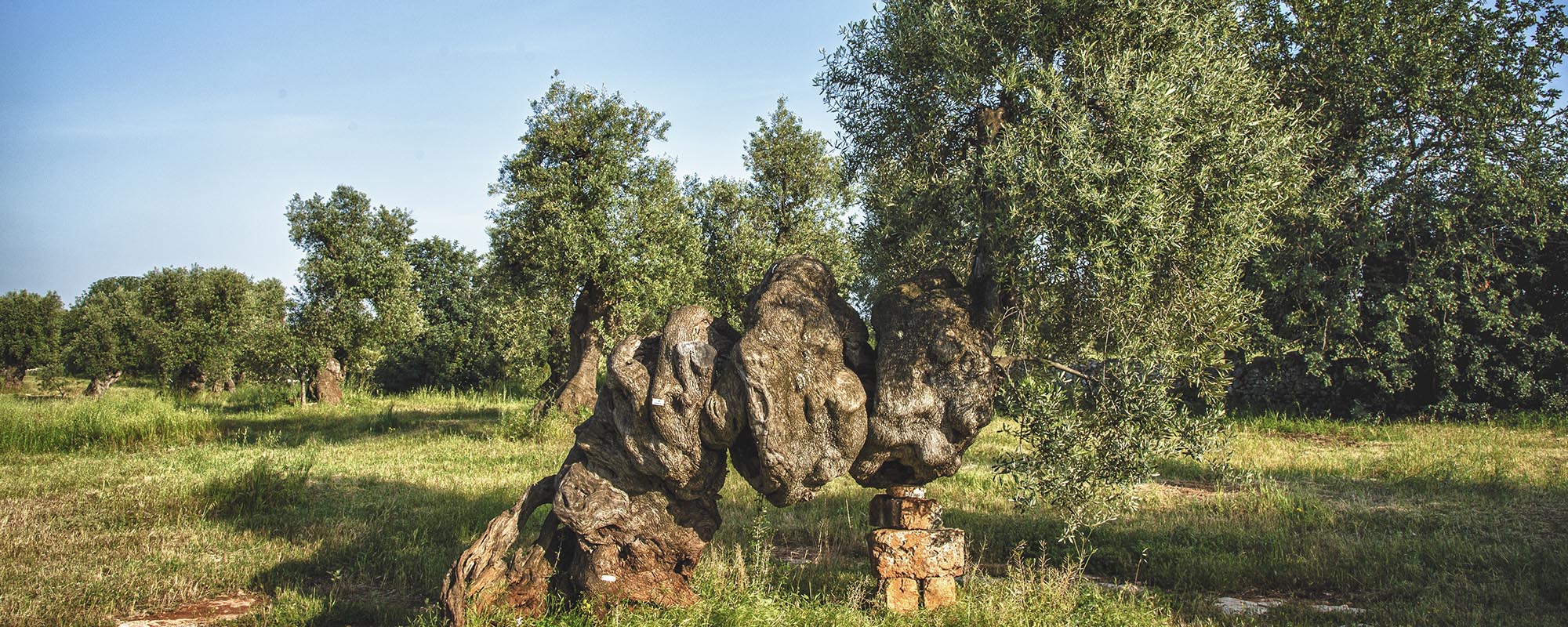
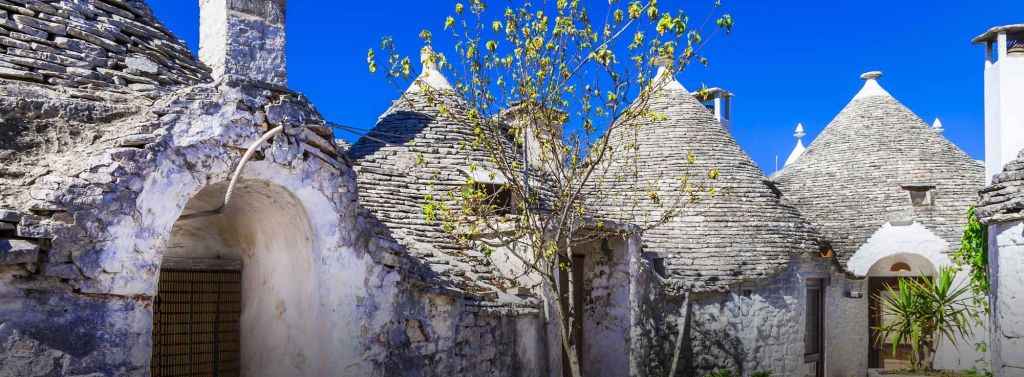

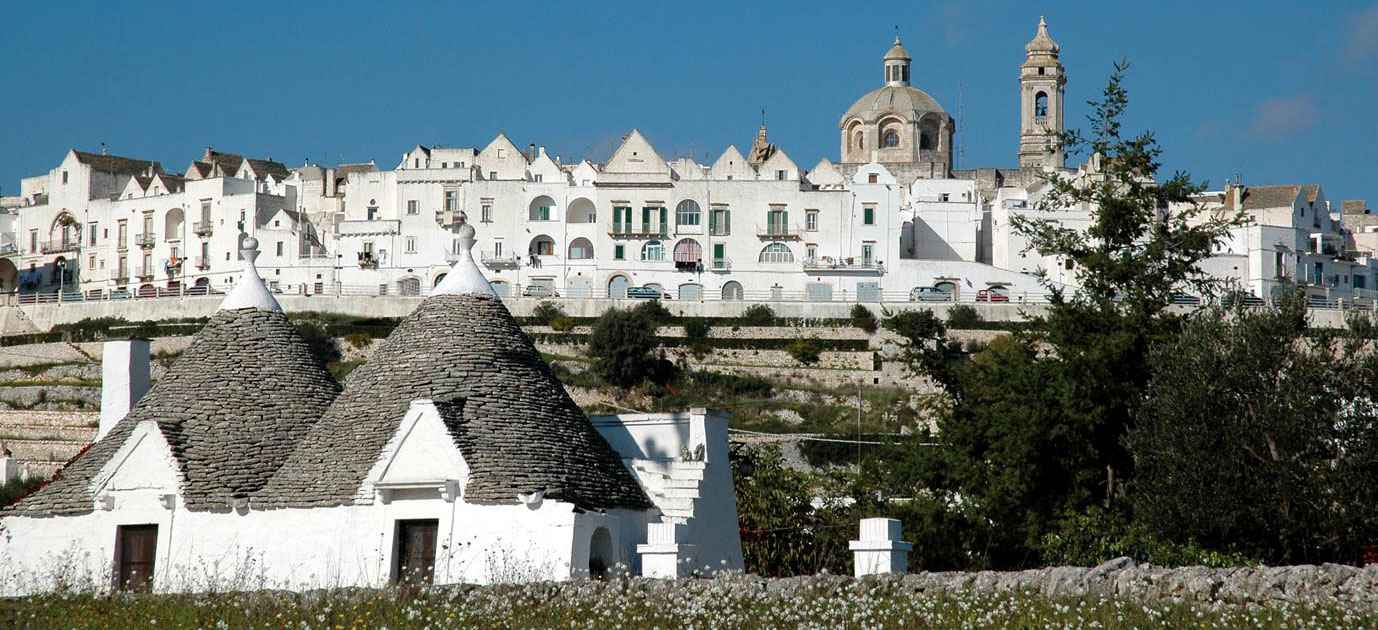

The traditional destination of the Itria Valley is Alberobello, where most of the trulli are concentrated while scattered throughout the countryside of central Puglia. A characteristic of the Itria Valley is however the great concentration of this original housing structure and the wide spread of rural houses therefore a very important percentage of the local population does not live in urban centers but prefers the countryside to the town. Despite the relative proximity between them, the various urban centers of the Itria Valley have peculiarities that distinguish one another in an original way: Martina Franca, for the initiative of its inhabitants, shows the different architectural styles that have followed each other in the centuries after its foundation; Ostuni, called "white city" is strictly colored white; Cisternino is a real balcony over the Itria Valley; Locorotondo has an architecture of the houses of the old town far from the typical shape of the trulli. Despite the evident differences between the various centers of the Itria Valley, in the countryside the trulli are the dominant and common element. Each center then makes a little history to itself and shows its originality. In the visit of a day, evidently the visit is limited to two, maybe three of the centers of the Itria Valley but it remains a very suggestive visit and full of charm.
| 1-3 people | 4-7 people | ||||
| Full Price | Down Payment | Balance | Full Price | Down Payment | Balance |
| 700 € | 210 € | 490 € | 980 € | 294 € | 686 € |

The traditional destination of the Itria Valley is Alberobello, where most of the trulli are concentrated while scattered throughout the countryside of central Puglia. A characteristic of the Itria Valley is however the great concentration of this original housing structure and the wide spread of rural houses therefore a very important percentage of the local population does not live in urban centers but prefers the countryside to the town. Despite the relative proximity between them, the various urban centers of the Itria Valley have peculiarities that distinguish one another in an original way: Martina Franca, for the initiative of its inhabitants, shows the different architectural styles that have followed each other in the centuries after its foundation; Ostuni, called "white city" is strictly colored white; Cisternino is a real balcony over the Itria Valley; Locorotondo has an architecture of the houses of the old town far from the typical shape of the trulli. Despite the evident differences between the various centers of the Itria Valley, in the countryside the trulli are the dominant and common element. Each center then makes a little history to itself and shows its originality.
The two-day visit, therefore, allows you to visit the 5 historic centers of the Itria Valley making it very impressive and full of charm
| 1-3 people | 4-7 people | ||||
| Full Price | Down Payment | Balance | Full Price | Down Payment | Balance |
| 1120 € | 336 € | 784 € | 1568 € | 470 € | 1098 € |